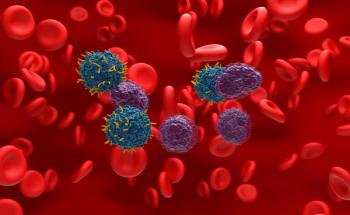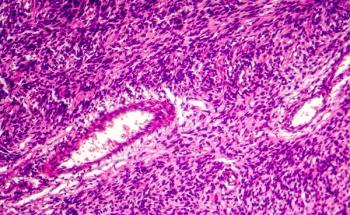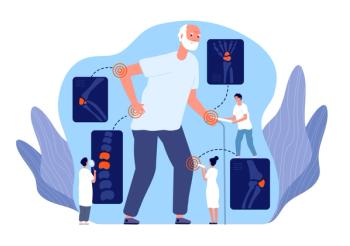
Mass-Like Opacities on Imaging Linked With LPI in CLL
Ten of 13 patients with leukemic pulmonary infiltrates (LPI) and chronic lymphocytic leukemia (CLL) had single or multiple nodular/mass-like opacities, authors found.
In patients with leukemic pulmonary infiltrates (LPI) associated with
The study authors explained that most people with CLL are asymptomatic when their disease is first diagnosed. Eventually, however, many patients develop symptoms linked to lymphadenopathy, hepatosplenomegaly, cytopenias, or other factors.
“The abnormal B lymphocytes of CLL commonly infiltrate lymph nodes and spleen but also various nonlymphoid organs, including the liver, skin, central nervous system, kidney, gastrointestinal tract, heart, and lung,” they added.
Patients with CLL who present with pulmonary symptoms or imaging abnormalities most often have infections, but the authors said other noninfectious pulmonary complications are also observed in CLL, including LPI.
“While autopsy data suggest lung involvement in leukemias to be relatively common, descriptions of clinicoradiologic features associated with LPI occurring in CLL have been rather sparse,” they said.
In order to add to the scientific literature, the authors described the clinical and imaging findings of 13 patients with LPI with biopsy-confirmed CLL who were treated at Mayo Clinic between 1998 and 2022. The patients had a median age of 77 years, and 10 of the patients were men. Their median known duration of CLL was 96 months, and none were receiving treatment at the time of the imaging.
All but one of the patients had dedicated chest CT scans available for review; this other patient had a CT from PET/CT study available. Investigators evaluated the CT images for the presence or absence of pulmonary nodules or masses, centrilobular nodules, diffuse bronchial wall thickening, and pleural nodules or masses, the authors explained. They also noted any pleural effusion or adenopathy.
In terms of symptoms, dyspnea (63%), cough (54%), and fatigue (46%) were the most common symptoms, although the authors added that 2 patients had no symptoms.
On CT, 10 of the 13 patients had single or multiple nodular/mass-like opacities, making it by far the most common CT abnormality among the cohort. Diffuse centrilobular nodules, pleural mass, and diffuse bronchial wall thickening were also noted, but only in 1 patient each. All of the patients had intrathoracic lymphadenopathy.
Seven of the patients eventually underwent treatment, and 6 showed signs of improvement. Yet, at a median follow-up of 41 months, 8 of the 13 patients had died. Three of those patients died from CLL, treatment-related complications, or pneumonia, and he other 5 died of unrelated or unknown causes.
The study investigators noted that, in other types of leukemia, interlobular septal thickening has been the most common reported chest imaging finding, whereas in this study of CLL, single or multiple mass-like opacities were more common.
Although reiterating that existing data are limited, the authors said their findings are in line with other studies. For example, they said a previous report on 21 patients with leukemia also found nodules and masses were the most common lung finding, even though that study did not separate out findings for the 10 participants with CLL.
The investigators cited several limitations to their research. Their study was a single-center report with a small number of participants, although they added that the small number of participants is partly a reflection of the fact that lung biopsy is uncommon in patients with CLL.
They concluded that their data suggest single mass-like opacities or multiple nodular/mass-like opacities are the clearest indicator of LPI among patients with CLL.
“Such imaging finding accompanied by intrathoracic lymphadenopathy in patients with untreated CLL should suggest the diagnosis of LPI, particularly in the absence of symptoms suggestive of ongoing infection,” they wrote.
Reference
Tzilas V, Hartman TE, Ryu JH. Leukemic pulmonary infiltrates in chronic lymphocytic leukemia: clinical and imaging features. Respir Investig. Published online January 18, 2024. doi:10.1016/j.resinv.2023.12.011
Newsletter
Stay ahead of policy, cost, and value—subscribe to AJMC for expert insights at the intersection of clinical care and health economics.














































